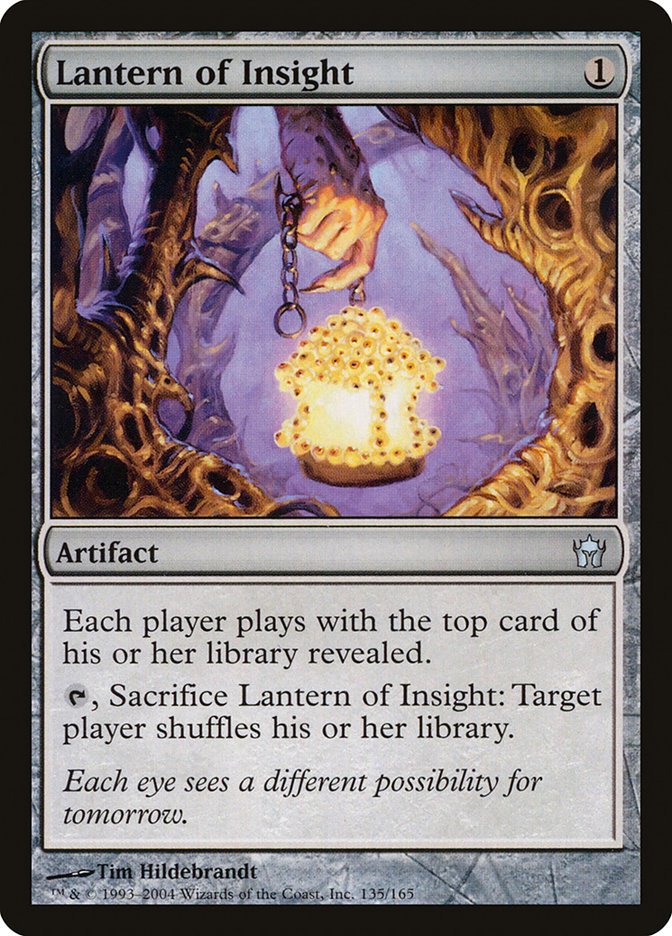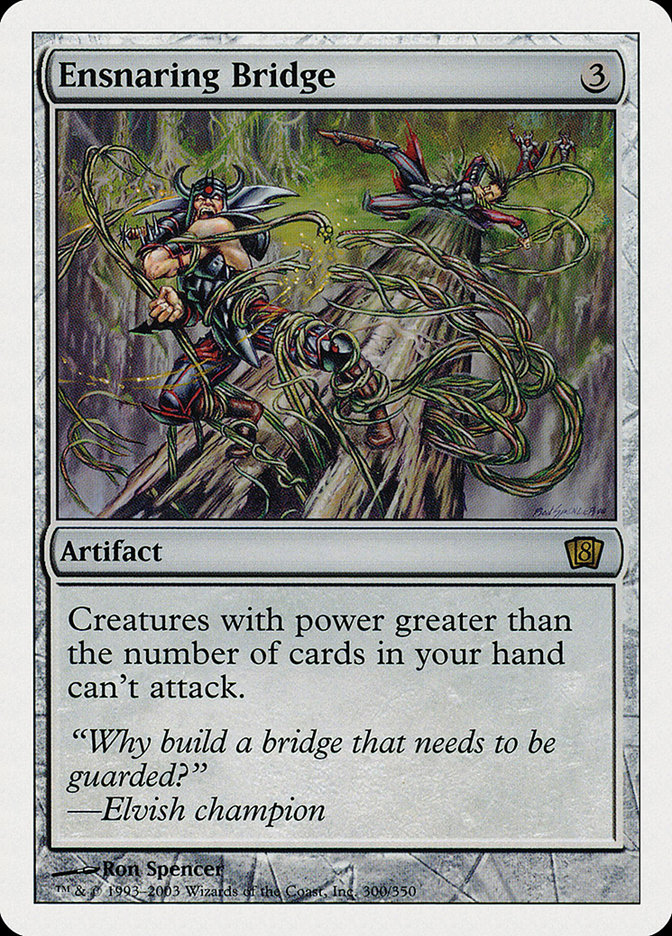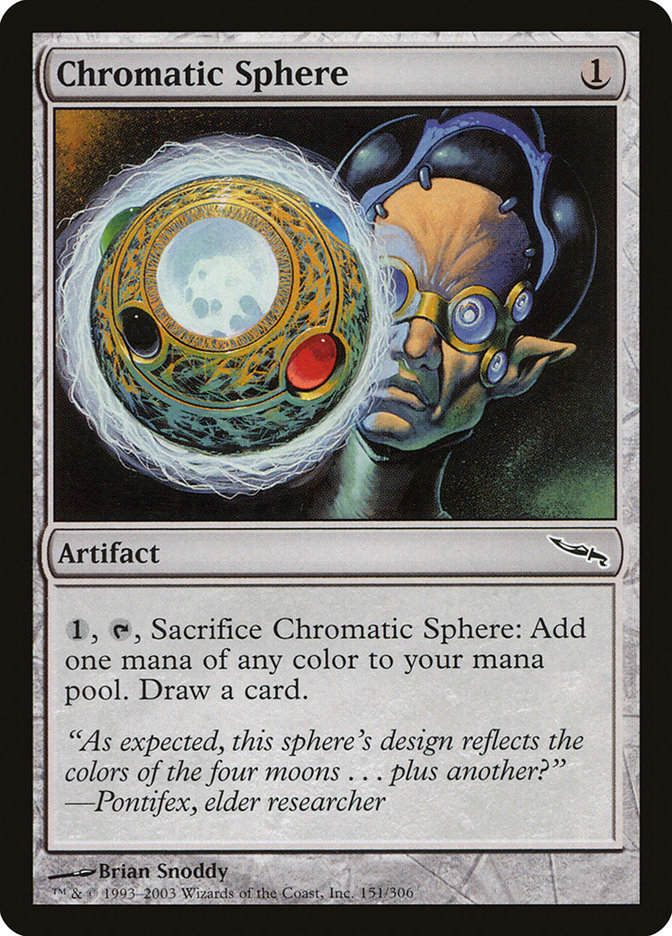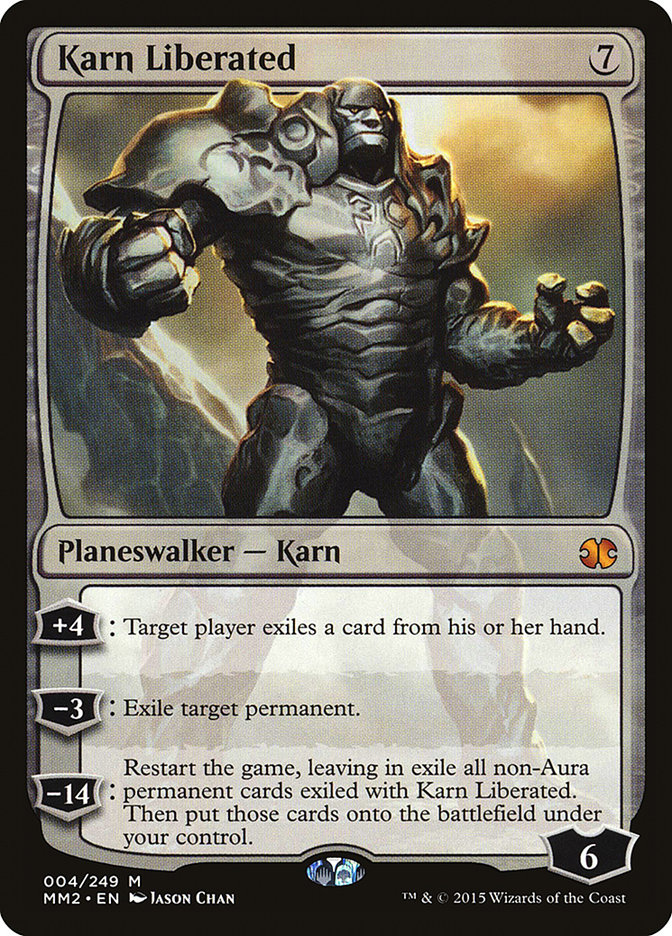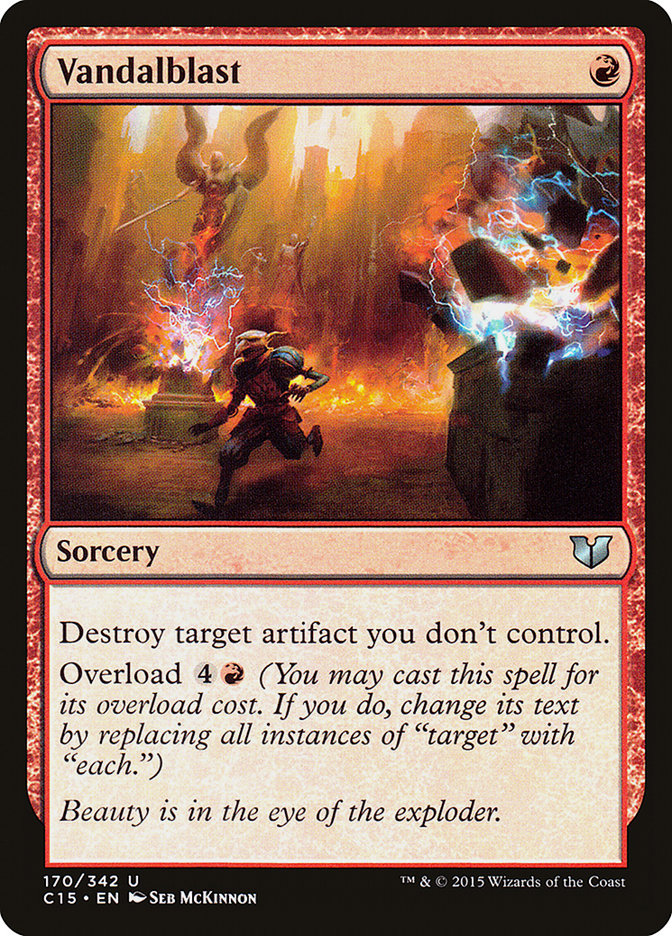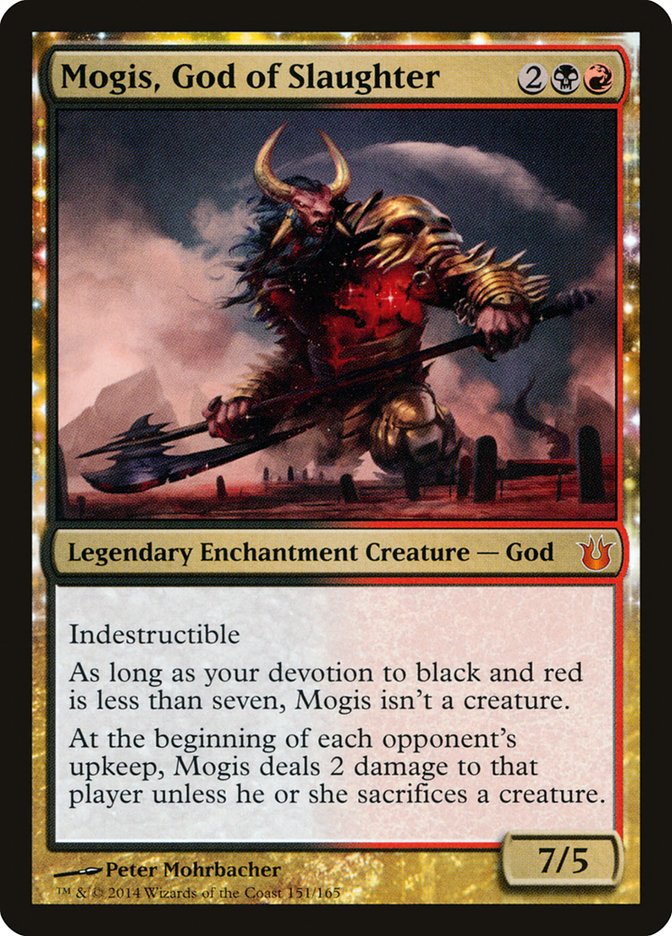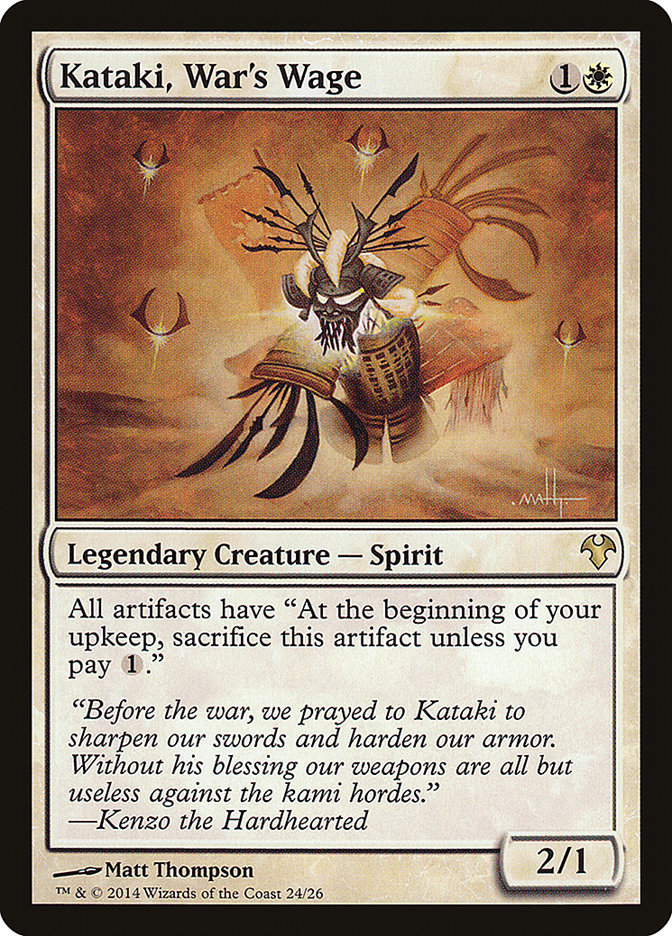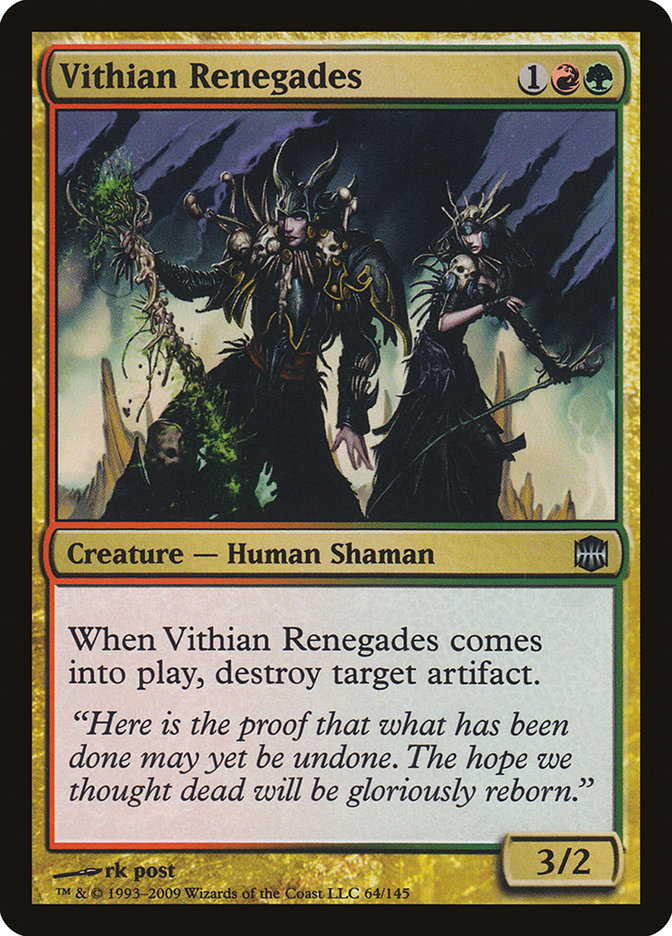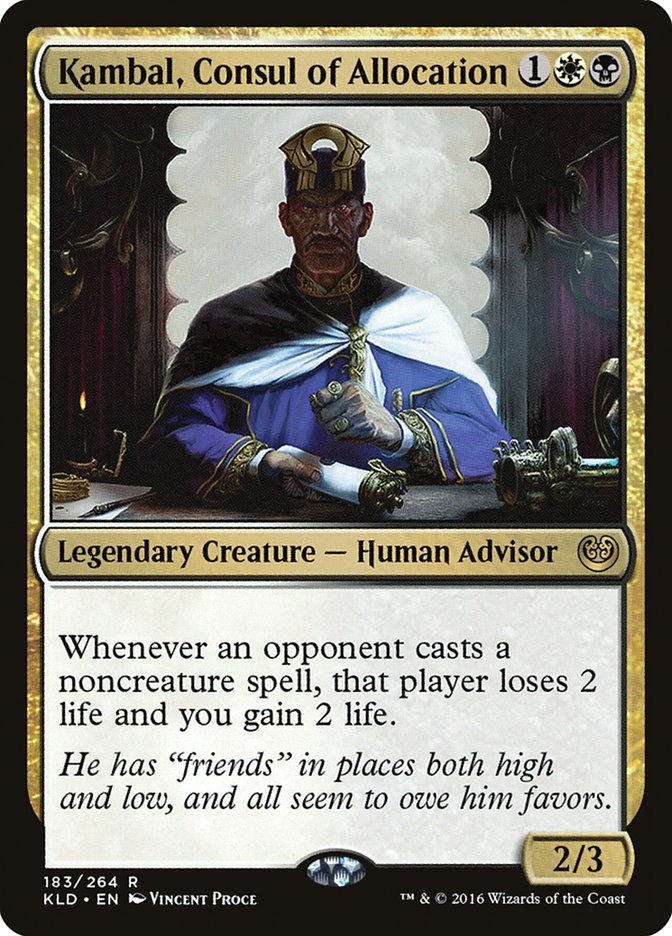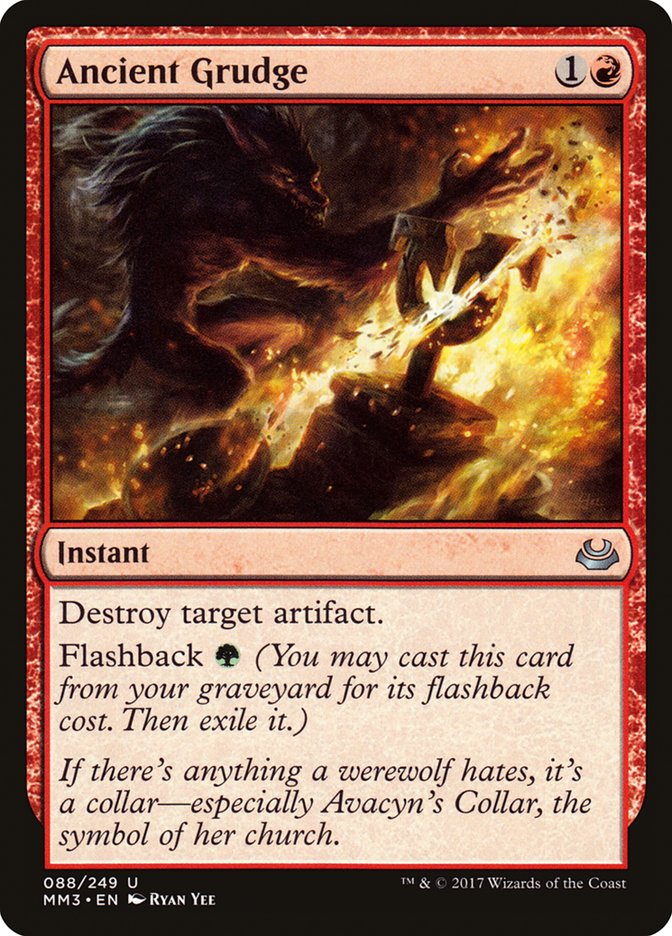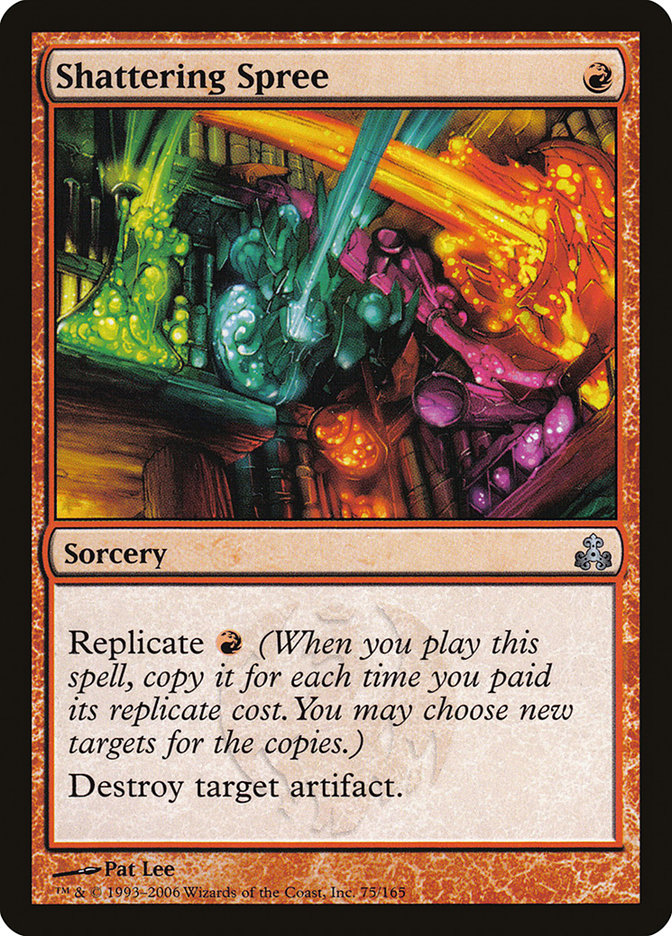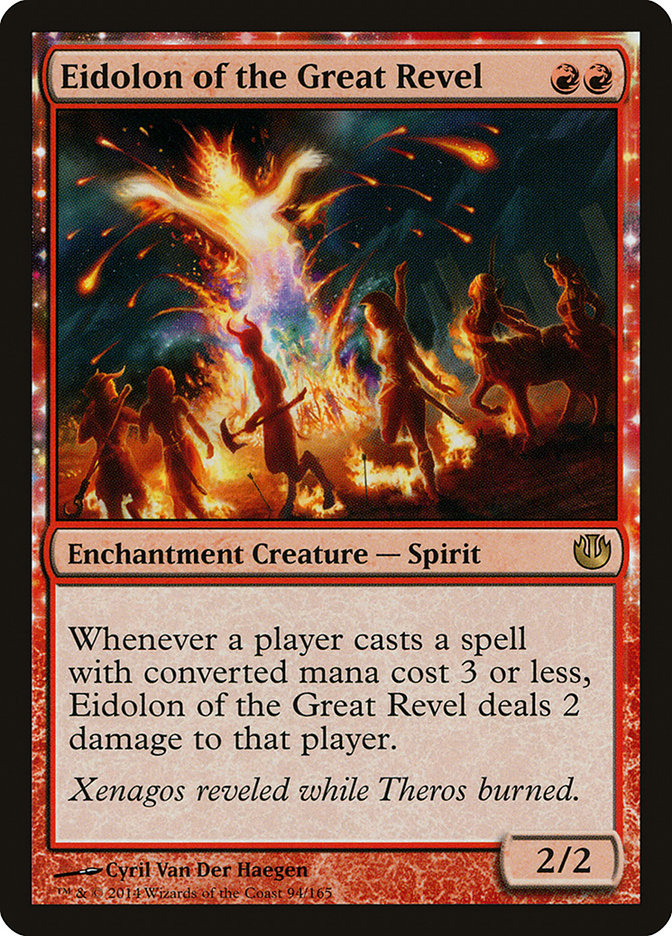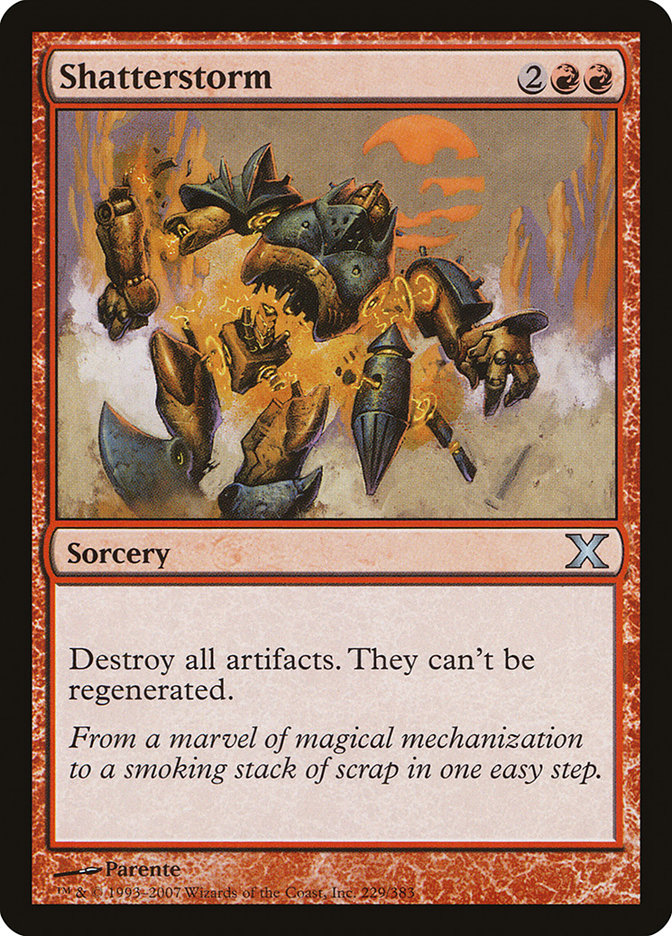Lantern Control won the Pro Tour Rivals of Ixalan.
I know there are a lot of people who hate the deck and are eagerly
awaiting the anticipated banning of a card from the deck, maybe even
something essential, like Lantern of Insight itself or Ensnaring Bridge.
Personally, I think those bans are far from necessary and would likely be a
mistake, so if nothing is banned and you have to play against Lantern, how
can you prepare yourself?
Lantern is a great deck that uses a lot of extremely powerful cards very
well while also turning some not-so-powerful cards into something far
greater than the sum of their parts, but it’s far from unbeatable. The best
solution comes in deck selection–it would be nice to be to be able to tell
you you can just play whatever deck you’re familiar with and tweak your
sideboard a bit, but that’s not how Lantern works. Lantern is designed to
stop you from casting your important spells–while in most matches, if your
deck is 54 blanks cards and six cards that literally say, “you win the
game” for maybe three or four mana, you’d expect to win around half the
time. But against Lantern, you’d very rarely win between their discard and
library control. Having a few bullets definitely helps, but density of
cards that matter is far more important against Lantern.
The other thing you need to understand that people often miss is that it
really matters which hate cards you use; they’re not all created equal and
there isn’t one that’s best for everyone. You need to pay attention to how
your hate card fits into your game plan. The best example: If your deck
loses to Ensnaring Bridge, Stony Silence isn’t the right hate card, but if
you don’t care about Ensnaring Bridge and it’s just the library lock that
beats you, Stony Silence is perfect. I’ll get into this more when I talk
about each deck specifically.
Also, no matter what you play, you should really understand how Lantern
works and what matters from the Lantern player’s perspective. If the deck
is still a mystery to you, start
here
with this extremely exhaustive guide written by Justin Cohen, regardless of
whether you’ll ever want to pilot it yourself.
So, if the best way to beat Lantern is in deck selection, what are the best
options?
VS G/x Tron
Tron is an awful matchup for Lantern. Oblivion Stone and Karn Liberated
have to be dealt with quickly, which is relatively manageable thanks to
Pithing Needle, but the problem is that successful builds of Whir Lantern
these days only have two Pithing Needles in the maindeck, and Tron has a
lot of different cards you need to stop, like Ugin, the Spirit Dragon and
Walking Ballista, in addition to those two. Tron just has a lot of cards
that matter and very few cards that are turned off by Ensnaring Bridge.
That sets a tricky baseline, but the real problem goes much deeper than
that. Ulamog, the Ceaseless Hunger is almost unbeatable when cast, because
the Lantern player is usually relying on a Pithing Needle or two, and when
it exiles them, everything falls apart. The Lantern player has a lot of
time to Thoughtseize Ulamog, but the problem is that Tron can find it with
Sanctum of Ugin, so every Expedition Map, Ancient Stirrings, and Sylvan
Scrying has to be stopped. Because this is such an important part of the
game plan, it’s important not to cast a Karn Liberated that has been named
with Pithing Needle until you’re ready to sacrifice Sanctum of Ugin to find
Ulamog, the Ceaseless Hunger, and if you want, you can even wait until you
can do both in the same turn sometimes to play around Thoughtseize.
This is how Tron establishes the threat density that makes it so hard for
Lantern, as there are very few cards they can safely let a Tron player
draw, but there’s still another level of difficulty on top of that.
Chromatic Star and especially Chromatic Sphere make controlling the Tron
player’s draws difficult at best–Chromatic Sphere draws as a mana ability,
which means it can’t be responded to. This means that if the Tron player
has an open mana and a Chromatic Sphere on the battlefield, any time the
Lantern player tries to deny a card, the Tron player can choose to put it
in their hand instead, which means any time a Lantern player tries to deny
them a card they’d prefer the Tron player not draw, they’re moving them
closer to whatever card they most want.
The most important thing to know as a Tron player is to sacrifice your
Chromatic Spheres and Stars judiciously. Merely registering almost any
build of Green Tron will give you a great matchup against Lantern, but if
you want to go even further, you could add Leyline of Sanctity to your
sideboard, as several members of the Ultimate Guard Pro Team did at Pro
Tour Rivals of Ixalan.
As I mentioned earlier, you want to make sure you have the right hate card
for each matchup, and Leyline of Sanctity is a great hate card in this
matchup because the Lantern player needs to rely heavily on Thoughtseize
and generally can’t afford to try to deal with permanents after they’ve
resolved when Pithing Needle isn’t sufficient. This also stops the Tron
player from being targeted by Codex Shredder, which attacks the already
very fragile lock and also prevents one of their best lines–trying to mill
and then Surgical Extraction an Urza land.
VS R/W Prison
I have no idea if this deck is any good, but I do know that it’s a
horrendous matchup for Lantern. Chalice of the Void, Blood Moon, Leyline of
Sanctity, and Stony Silence are all fantastic cards against Whir Lantern,
and this deck doesn’t care about Ensnaring Bridge. The fact that it can use
several differently named planeswalkers to win helps it resist Pithing
Needle, and this deck can potentially add any kind of mass artifact removal
spell on top of everything else. Because this deck piles on additional hate
cards as the game progresses, the Lantern player’s only hope is to
establish a quick Lantern of Insight with a mill piece. This makes Leyline
of Sanctity and Stony Silence fantastic in this matchup, as both make it
harder for the Lantern player to control the top of the R/W Prison player’s
deck, allowing the hate cards to pile up until the Lantern deck simply
fails to function. This is another deck choice where it seems like the
specific choices you make barely matter. If you show up with this
archetype, you’ll be happy to play against Lantern.
VS U/W Control
I’ve generally found game 1 of this matchup to be favorable for Lantern
because U/W Control has so many dead cards in all the creature removal, but
after they get to sideboard that out for cards that matter, I think the
sideboard games heavily favor the U/W Control player. Detention Sphere,
Cryptic Command, Stony Silence, planeswalkers, Geist of Saint Traft,
Snapcaster Mage, instant speed card draw, Field of Ruin–these cards are
all effective and attack from slightly different angles. It’s worth noting
that I think the U/W Control deck generally wants to be the “aggressor” in
this matchup, so far as there is one–it’s a weird concept, but the point
is that I think you want to be doing things proactively, and I’ve found
that counterspells are among U/W’s worst cards after sideboarding; as long
as Lantern isn’t under any direct pressure, it doesn’t matter that much if
something gets countered, especially if they can protect an Academy Ruins
and keep recasting their cards that matter when they get countered. U/W
Control does best when it can proactively attack the Lantern player or
their resources.
VS Grixis Control
Corey Burkhart has a good matchup against Lantern. At this point, there’s a
pretty long history of Corey being the only person who ever wins with this
deck, so I wouldn’t necessarily recommend it, but the cards do
fundamentally line up very well against what Lantern is doing and this deck
is pretty close to what Grixis Death’s Shadow hopes it can sideboard into.
The important things going on here:
- 4 Snapcaster Mage
- 4 Kolaghan’s Command
- 4 Cryptic Command
- 2 Search for Azcanta
- 4 Field of Ruin
- 3 Surgical Extraction (after sideboard)
Surgical Extraction is a huge card in this matchup, as it’s almost always
going to go long, and it’s very easy for Grixis Control to get an Ensnaring
Bridge, Codex Shredder, or Lantern of Insight in the graveyard at some
point, and if any of those is exiled, it’s very difficult for Lantern to
win. If I were to try to make this matchup better for Grixis Control, I’d
add Vandalblast or, if I really wanted to win precisely this matchup,
Mogis, God of Slaughter to the sideboard. Mogis costs exactly four mana,
which means it can’t be hit by Inquisition of Kozilek, Lantern generally
has no way to remove it from the battlefield or beat it once it’s resolved,
and if they try to mill it, it can be returned to hand with Kolaghan’s
Command.
Incidentally, yeah, there are a lot of really obscure cards that Lantern
randomly has trouble dealing with. Mostly, they are permanents that don’t
need to attack or use activated abilities, especially if they can actually
win the game directly or punish Lantern’s basic functioning–cards like
Mogis, God of Slaughter; Kambal, Consul of Allocation; Eidolon of the Great
Revel; Ruric Thar, the Unbowed; Kataki, War’s Wage; or Tireless Tracker.
VS Humans
I used to think this was a good matchup for Lantern, but after testing it
before the Pro Tour, I think the opposite is true. Phantasmal Image really
swung the matchup, and after its addition, I think it’s too easy for Humans
to pile up multiple Kitesail Freebooters or Meddling Mages, especially if
they also have Thalia, Guardian of Thraben and stop the Lantern player from
protecting themselves.
After sideboard, the Lantern player can bring in more removal to try to
answer the creatures that matter, but Humans gets to add cards like,
Kataki, War’s Wage, Vithian Renegade, and Kambal, Consul of Allocation,
which is a real nightmare.
This is a great example of the kind of deck where I think Stony Silence or
Leyline of Sanctity would absolutely be the wrong way to attack the Lantern
player, and the right approach is absolutely just overloading on creatures
that thwart Lantern’s defenses.
Unlike some of the decks above, I do think the specific build matters here.
The more of the creatures I’ve named here you play, the better your matchup
against Lantern will be. If you skimp on creatures like this in favor of
creatures that only matter as attackers, it can become too easy to get
locked out by Ensnaring Bridge.
Games of this matchup are extremely short and feel very lopsided. From a
small sample size, it can be easy to believe that either player is a
massive favorite if you watch either one of them run away with the game
based on resolving important cards. Ultimately, I think the matchup can be
somewhat close, but it’s easier for the Humans player to get a big edge in
deckbuilding if they want it.
VS Death’s Shadow
Like with Humans, this matchup is going to come down to the details of how
the Death’s Shadow player builds their deck, but there’s more room for
variation here, which means some builds of Death’s Shadow will good against
Lantern and others will be bad. In general, the more cards in the Death’s
Shadow deck that can destroy an artifact, the better the matchup will be
for the Death’s Shadow deck.
Ancient Grudge is probably the best use of a sideboard slot for a Traverse
Death’s Shadow player who’s looking to beat Lantern without adding anything
overly narrow, but Tireless Tracker as a Traverse the Ulvenwald target
might be even better.
For Grixis Death’s Shadow, Kolaghan’s Command is the standard, but any
other artifact removal will also perform well, as will most planeswalkers.
Be careful about not overly exposing yourself to Leyline of Sanctity and
minimize the extent to which you’re trying to play a creature deck–look at
the decks I’m suggesting that are good against Lantern. If you build a
control deck with card advantage and artifact removal, especially if you
have a good answer to Academy Ruins, you can grind them out. They’re too
good at finding Ensnaring Bridge, so it’s not useful to try to steal games
with Death’s Shadow. Besides, a single creature hits hard enough to force
them to find an Ensnaring Bridge as soon as possible, and they won’t be
relying on spot removal, so you really never want to draw multiple
creatures. Sideboard low enough that you can pressure them, but not so much
that Ensnaring Bridge can generate a lot of functional card advantage for
the Lantern player in the early game.
VS Mardu Pyromancer
Gerry may have lost the finals to Lantern, but I’m still not excited to
play against Mardu with Lantern. Game 1 has felt pretty easy for Lantern,
but this is another deck that can easily have a great sideboard against
Lantern. Whir of Invention is important because the Mardu deck puts Lantern
under a good amount of pressure, but it’s also a liability because it can
get trapped by a Blood Moon, and Ensnaring Bridge is relatively useless
against Mardu Pyromancer if the Lantern player has even a single card in
hand.
This is the kind of deck that can sideboard Stony Silence, but where I
wouldn’t really recommend it. I think Shattering Spree or Shatterstorm is
the correct approach from the Mardu side. Something like Wear is nice,
because the Lantern player will want Leyline of Sanctity, but they’re
already planning to use Welding Jar and build redundancy among their
artifacts, specifically, finding multiple Ensnaring Bridges, which does
most of the work, but a mass artifact removal spell breaks all of that and
tends to instantly end the game in Mardu’s favor. Again, this would be a
place where a dedicated oddball Mogis, God of Slaughter would likely
perform well, and Kambal, Consul of Allocation can also fit nicely here.
VS Abzan
Reid Duke’s deck is enough of an outlier in the format that many have
almost forgotten how frightening a matchup G/B/x Midrange was for Lantern
back when Jund was heavily played, and a resolved Tireless Tracker out of
any deck that has a few real pieces of interaction is always a nightmare
for Lantern. Personally, I think three Stony Silence, as Reid played in his
sideboard, is a little overkill. Again, I’m not overly impressed with Stony
Silence; if your deck can’t win through Ensnaring Bridge, Stony Silence
often just delays the game until the Lantern player finds an answer, and I
think this deck is a little too weak to Ensnaring Bridge for me to want to
rely on it. Unless that Stony Silence is a necessary part of the plan
against Tron, I’d want to remove one of them for a Creeping Corrosion.
VS Burn
Burn is actually overestimated as a foil to Lantern. An unanswered Eidolon
of the Great Revel will easily win the game, but without it, I find Burn
often comes up just short of winning before getting locked out by Ensnaring
Bridge and Witchbane Orb. Burn is a deck that has game against Lantern, but
it’s by no means a slam dunk, so it’s not a deck I’d recommend to someone
specifically based on that matchup. The reason I bring up Burn is that I
want to comment on the sideboard. Industry standard has become playing
Destructive Revelry and a single Stomping Ground. This is a good approach
because Destructive Revelry can destroy Leyline of Sanctity, but I’ve
played several games now where I’ve managed to keep my opponent from
finding green mana to lock it out. At the Pro Tour, I lost to Kyle Boggemes
playing R/W Burn with no green splash because he had Shattering Spree,
which, not surprisingly, was extremely effective against me. It’s worth
noting that that kind of card is particularly effective out of Burn because
Lantern wants to sideboard out Thoughtseize, so they’re less likely to make
the Burn player discard it before the point where it can immediately win
the game for the Burn player. This would be even more true of Shatterstorm,
which can’t be hit by Inquisition of Kozilek, meaning the Lantern player’s
only hope to win the game against a Burn player whose drawn it would be
Collective Brutality, which is unpopular to use in large numbers at the
moment.
You’ll notice that this is a fairly long list of decks that I think are
decent to positive against Lantern, and this list isn’t comprehensive. This
is why I don’t think any action needs to be taken against Lantern, and I
think the metagame will correct itself. For the moment, just try to avoid
playing decks like G/W Hexproof that have almost no chance, and if you do
have to play it, please don’t rely entirely on Seal of Primordium for your
artifact removal–Lantern players know about it and they’ll name it with
Pithing Needle. You can afford to just play a normal artifact removal spell
(or Creeping Corrosion) instead.
Whatever you play, when choosing your sideboarding cards for the matchup,
think about how the game is going to play out. Lantern does a very
consistent thing, so you should be able to tell how your deck lines up
against that and how the sideboard card fits in. Wherever possible, choose
something unexpected. Lantern players know that their most important skill
is metagame knowledge, and you can expect that they’ll have studied how
your deck is usually built and they’ll prepare for the normal cards they’d
expect from it. If you want to beat them, try to catch them off guard, but
make sure you do it in a meaningful way.


